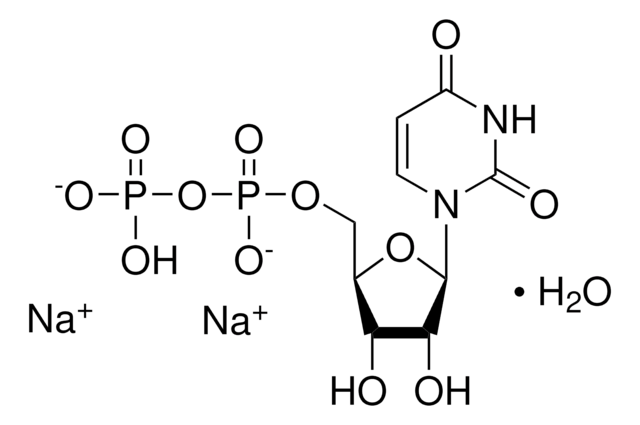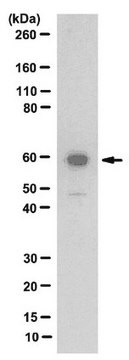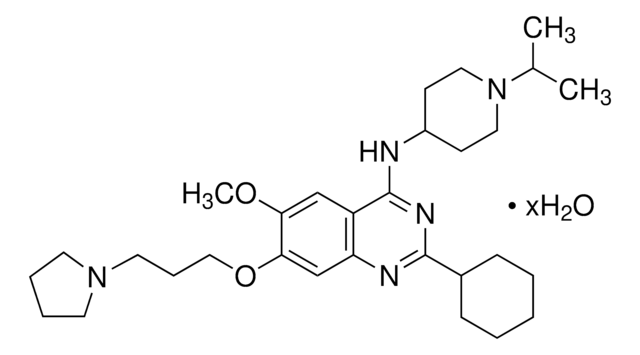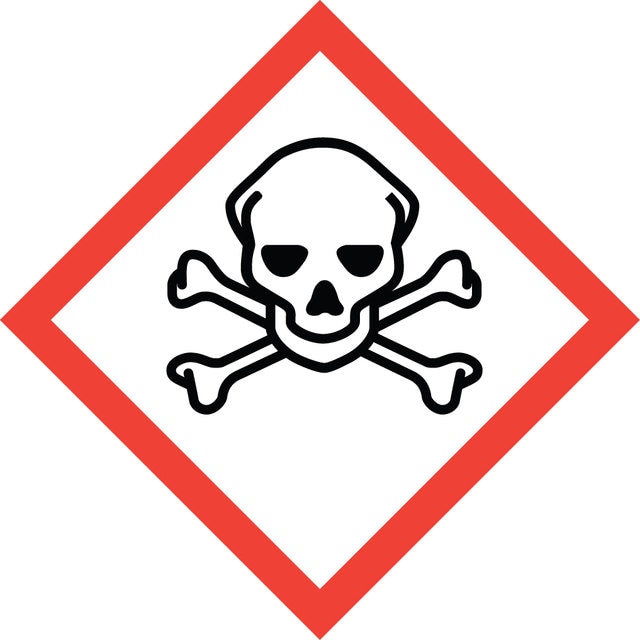M0319
MRS 2578
≥95% (HPLC)
Synonyme(s) :
1,4-Di[3-(3-isothiocyanatophenyl)thioureido]butane
About This Item
Produits recommandés
Niveau de qualité
Essai
≥95% (HPLC)
Forme
powder
Conditions de stockage
desiccated
Couleur
white
Solubilité
DMSO: >5 mg/mL
H2O: insoluble
Température de stockage
2-8°C
Chaîne SMILES
S=C=Nc1cccc(NC(=S)NCCCCNC(=S)Nc2cccc(c2)N=C=S)c1
InChI
1S/C20H20N6S4/c27-13-23-15-5-3-7-17(11-15)25-19(29)21-9-1-2-10-22-20(30)26-18-8-4-6-16(12-18)24-14-28/h3-8,11-12H,1-2,9-10H2,(H2,21,25,29)(H2,22,26,30)
Clé InChI
QOHNRGHTJPFMSL-UHFFFAOYSA-N
Application
- to study the role of purinergic receptor in Up4A-induced relaxation in coronary small arteries from swine
- in P. aeruginosa infected mice to test its effect on the inflammatory responses
- to test its inhibition on neutrophil extracellular traps and monosodium urate (MSU) crystals formation in polymorphonuclear leukocytes
Actions biochimiques/physiologiques
Caractéristiques et avantages
Mention d'avertissement
Danger
Mentions de danger
Conseils de prudence
Classification des risques
Acute Tox. 3 Oral - Eye Irrit. 2 - Resp. Sens. 1 - Skin Irrit. 2 - STOT SE 3
Organes cibles
Respiratory system
Code de la classe de stockage
6.1C - Combustible acute toxic Cat.3 / toxic compounds or compounds which causing chronic effects
Classe de danger pour l'eau (WGK)
WGK 3
Point d'éclair (°F)
Not applicable
Point d'éclair (°C)
Not applicable
Équipement de protection individuelle
dust mask type N95 (US), Eyeshields, Faceshields, Gloves
Faites votre choix parmi les versions les plus récentes :
Déjà en possession de ce produit ?
Retrouvez la documentation relative aux produits que vous avez récemment achetés dans la Bibliothèque de documents.
Notre équipe de scientifiques dispose d'une expérience dans tous les secteurs de la recherche, notamment en sciences de la vie, science des matériaux, synthèse chimique, chromatographie, analyse et dans de nombreux autres domaines..
Contacter notre Service technique










